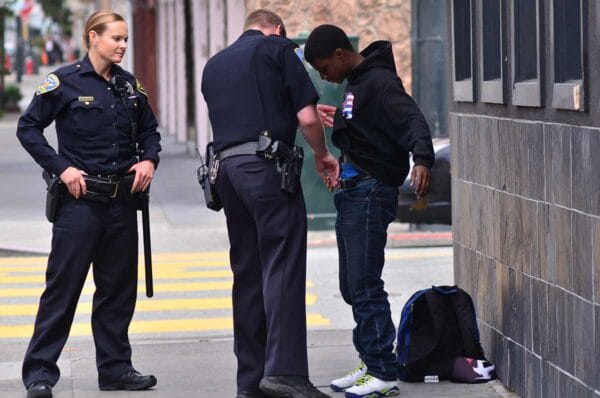Opinion By Matthew Mangino

In the thick of Prohibition, Justice Benjamin Cardozo famously lamented that, under the exclusionary rule, “the criminal is to go free because the constable has blundered.” While Prohibition lasted from 1920 to 1933, it left an indelible mark on the criminal justice system.
Zealous government officials feverishly worked to stop the flow of alcohol, often trampling the rights of individuals in the process. Police often engaged in lawlessness, pursued illegal methods of gathering evidence, and engaged in questionable investigative tactics. It took more than 30 years to reset the criminal justice system.
In the 1960s, U.S. Supreme Court Chief Justice Earl Warren, and his fellow justices, began to reinfuse the Constitution into investigatory criminal procedure. In 1961, the Warren court adopted the exclusionary rule to control police misconduct.
If the police violated a suspect’s rights while investigating a crime, any evidence obtained would be excluded from trial. Justice Cardozo would have been displeased, but the exclusionary rule created an atmosphere of deference to individual rights, better training, and ultimately better police work.
The Warren court brought the American criminal justice system Miranda (being informed of one’s rights); Gideon (right to counsel); Mapp (the exclusionary rule); Katz (illegal wiretaps); and Terry (reasonable suspicion).
However, in the years since the Warren court, these very important rights have been increasingly dismantled by courts through the aggressive advocacy of prosecutors nationwide.
As Vida B. Johnson wrote in “Whom do Prosecutors Protect?” for the Boston University Law Review;
“People are less secure from governmental intrusions than ever before because prosecutors have repeatedly asked judges to give individual law enforcement officers passes when they have crossed previously drawn constitutional lines.”
The Fourth Amendment to the United States Constitution states that “the right of the people to be secure in their persons — against unreasonable searches and seizures, shall not be violated, and no Warrants shall issue, but upon probable cause.”
One decision by the Warren court that has had a lasting effect was originally perceived as an effort to protect individuals from unlawful intrusion by police. Prior to the decision in Terry v. Ohio, police could only conduct interrogation on the street with probable cause. However, those interrogations often happened without probable cause. The high court in Terry created a level of suspicion, less than probable cause, but more than a hunch — reasonable suspicion.
Instead of individuals being stopped on the street at the whim of police, the officer had to articulate some level of suspicion. In addition, when a detention based on reasonable suspicion was being executed, a police officer could pat down the detainee for officer protection — the dawn of “stop-and-frisk.”
In Terry’s lone dissent, Justice William O. Douglas warned that “to give the police greater power than a (judge) is to take a long step down the totalitarian path.” The decision in Terry is still being felt today.
Stop-and-frisk became a law enforcement tactic to remove illegal guns from the street. The tactic had a dramatic effect on individual rights, particularly in urban areas and particularly against young men of color.
According to the Center for Constitutional Rights, in 2011, the NYPD reported a 685,724 stop-and-frisks. Eighty-four percent of those stopped were Black or Latino, and 88% of the people stopped were neither arrested nor received summonses. Despite the stated purpose of the policy, weapons were recovered in less than 2% of stops.
Three years later, New York Judge Shira A. Scheindlin ruled that NYPD’s stop-and-frisk tactics violated the Fourth Amendment prohibition against unreasonable searches and seizures.
That was not the end of stop-and-frisk. Scheindlin ruled that the way the NYPD was applying stop-and-frisk was unconstitutional; she did not rule that stop-and-frisk was unconstitutional. Terry remains the law and stop-and-frisk remains and integral part of police work.
About Matthew T. Mangino
Matthew T. Mangino is of counsel with Luxenberg, Garbett, Kelly & George P.C. His book “The Executioner’s Toll, 2010” was released by McFarland Publishing. You can reach him at www.mattmangino.com and follow him on Twitter @MatthewTMangino. Matthew T. Mangino’s work appears here at AmmoLand News through a license with Creators Syndicate.

It’s past timw ALL courts began strictly following the Constitution and the Bill of Rights, and vigorously protecting the rights snd liberties if the individual over “society at large”.
Starting with a good curb stomping of ATF’s nuts.
jailing of most of the people working for them many for murder
Enter the Biden administration, where over half the country (i.e, those who didn’t vote for Biden, disagree with him on anything, are parents, christians, republicans, gun owners, users of gasoline or oil, non LGBTQ+, middle or lower class, U.S. citizens, or MIGHT fit any of those categories) are “terrorists” and thus don’t require any other probable cause to be raided, detained, shot, or otherwise punished.
BTW, observation of POTUS seems to reveal that he must be still celebrating the end of prohibition. The signs are there: slurred speech, difficulty walking, impaired judgment, etc.
The concept of an impartial judge is both folly and a fallacy. Judges receive their checks, in most cases, from the same place the police and prosecutors do. There is a shared interest in keeping those places (Federal, state, county, and municipal) well-funded and viable in their “missions”. If police and prosecutors are not sending a steady stream of victi… er, defendants, to the judges to rule on, the need for the judge tends to diminish. Likewise, the judge needs to ensure that he or she collects adequate fines for the entity (ies) that pay his or her salary and… Read more »
Mangino: “Stop-and-frisk became a law enforcement tactic to remove illegally possessed guns from the street.” There is no such thing as an illegal gun.
left out creation of atf and fbi